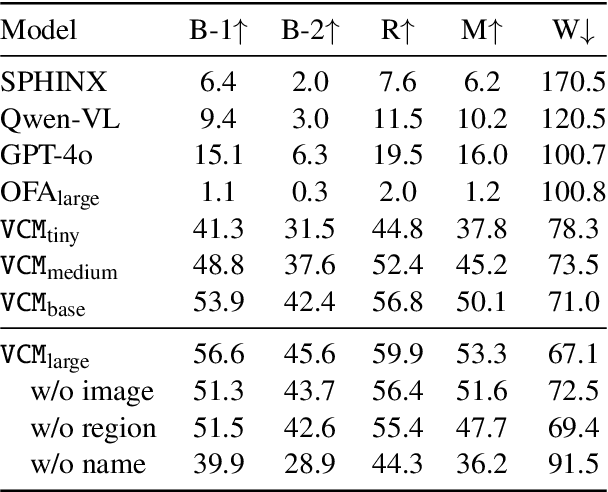Yurun Song
ShareLoRA: Parameter Efficient and Robust Large Language Model Fine-tuning via Shared Low-Rank Adaptation
Jun 16, 2024Abstract:This study introduces an approach to optimize Parameter Efficient Fine Tuning (PEFT) for Pretrained Language Models (PLMs) by implementing a Shared Low Rank Adaptation (ShareLoRA). By strategically deploying ShareLoRA across different layers and adapting it for the Query, Key, and Value components of self-attention layers, we achieve a substantial reduction in the number of training parameters and memory usage. Importantly, ShareLoRA not only maintains model performance but also exhibits robustness in both classification and generation tasks across a variety of models, including RoBERTa, GPT-2, LLaMA and LLaMA2. It demonstrates superior transfer learning capabilities compared to standard LoRA applications and mitigates overfitting by sharing weights across layers. Our findings affirm that ShareLoRA effectively boosts parameter efficiency while ensuring scalable and high-quality performance across different language model architectures.
VCD: Knowledge Base Guided Visual Commonsense Discovery in Images
Feb 27, 2024



Abstract:Visual commonsense contains knowledge about object properties, relationships, and behaviors in visual data. Discovering visual commonsense can provide a more comprehensive and richer understanding of images, and enhance the reasoning and decision-making capabilities of computer vision systems. However, the visual commonsense defined in existing visual commonsense discovery studies is coarse-grained and incomplete. In this work, we draw inspiration from a commonsense knowledge base ConceptNet in natural language processing, and systematically define the types of visual commonsense. Based on this, we introduce a new task, Visual Commonsense Discovery (VCD), aiming to extract fine-grained commonsense of different types contained within different objects in the image. We accordingly construct a dataset (VCDD) from Visual Genome and ConceptNet for VCD, featuring over 100,000 images and 14 million object-commonsense pairs. We furthermore propose a generative model (VCDM) that integrates a vision-language model with instruction tuning to tackle VCD. Automatic and human evaluations demonstrate VCDM's proficiency in VCD, particularly outperforming GPT-4V in implicit commonsense discovery. The value of VCD is further demonstrated by its application to two downstream tasks, including visual commonsense evaluation and visual question answering. The data and code will be made available on GitHub.
LinguaLinked: A Distributed Large Language Model Inference System for Mobile Devices
Dec 01, 2023Abstract:Deploying Large Language Models (LLMs) locally on mobile devices presents a significant challenge due to their extensive memory requirements. In this paper, we introduce LinguaLinked, a system for decentralized, distributed LLM inference on mobile devices. LinguaLinked enables collaborative execution of the inference task across multiple trusted devices. LinguaLinked ensures data privacy by processing information locally. LinguaLinked uses three key strategies. First, an optimized model assignment technique segments LLMs and uses linear optimization to align segments with each device's capabilities. Second, an optimized data transmission mechanism ensures efficient and structured data flow between model segments while also maintaining the integrity of the original model structure. Finally, LinguaLinked incorporates a runtime load balancer that actively monitors and redistributes tasks among mobile devices to prevent bottlenecks, enhancing the system's overall efficiency and responsiveness. We demonstrate that LinguaLinked facilitates efficient LLM inference while maintaining consistent throughput and minimal latency through extensive testing across various mobile devices, from high-end to low-end Android devices. In our evaluations, compared to the baseline, LinguaLinked achieves an inference performance acceleration of $1.11\times$ to $1.61\times$ in single-threaded settings, $1.73\times$ to $2.65\times$ with multi-threading. Additionally, runtime load balancing yields an overall inference acceleration of $1.29\times$ to $1.32\times$.
GAP-Gen: Guided Automatic Python Code Generation
Jan 19, 2022



Abstract:Automatic code generation from natural language descriptions can be highly beneficial during the process of software development. In this work, we propose GAP-Gen, an automatic code generation method guided by Python syntactic constraints and semantic constraints. We first introduce Python syntactic constraints in the form of Syntax-Flow, which is a simplified version of Abstract Syntax Tree (AST) reducing the size and high complexity of Abstract Syntax Tree but maintaining the crucial syn-tactic information of Python code. In addition to Syntax-Flow, we introduce Variable-Flow which abstracts variable and function names consistently throughout the code. In our work, rather than pre-training, we focus on modifying the fine-tuning process which reduces computational requirements but retains high generation performance on automatic Python code generation task. GAP-Gen fine-tunes the transformer-based language models T5 and CodeT5 using the Code-to-Docstring datasets CodeSearchNet, CodeSearchNet AdvTest, and Code-Docstring-Corpus from EdinburghNLP. Our experiments show that GAP-Gen achieves better results on automatic Python code generation task than previous works
 Add to Chrome
Add to Chrome Add to Firefox
Add to Firefox Add to Edge
Add to Edge